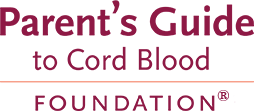You are here
News
2013
Jun 2013 Hi, my name is Marriam Carol Mulumba. You can call me Carol. I was born on May 31, 2001. I am 12 years old. I was born with a disease called Sickle Cell Anemia. Unfortunately for me, I had the severe type. The doctors said I wouldn't live past five. My mom and dad were depressed all the time. Everything was hard for me. Running, walking, and even holding something was so painful! My life was miserable.
May 2013 According to the World Marrow Donor Association (WMDA) 2012 annual report, as of 1 Jan. 2012 the world inventory of cord blood in public banks was 591 thousand. By comparison, the Parent's Guide to Cord Blood Foundation finds that as of 31 Dec. 2012, the world inventory of cord blood in family banks was over 2.47 million.
May 2013 Every 18.5 seconds, someone in America suffers a brain injury. A brain injury can happen anytime, anywhere, to anyone - a brain injury does not discriminate. In the blink of an eye, a brain injury changes the way we think, talk, move and feel.
May 2013 Traumatic brain injury (TBI) is considered to be a major cause of disability and death worldwide, especially in children (as a result of falls and playground injuries), soldiers (from blasts and accidents), and the elderly (falls and stroke). The incidence of TBI is 235 per 100,000, with a worldwide mortality of about 1.5 million per year, and in the USA more than 5 million people are coping with disabilities from TBI at a cost of $60 billion a year.
Apr 2013 It took 2.5 years to reach the first 1000 members, 9 months for the 2nd thousand to join, 6 months to bring in the 3rd thousand, another 6 months to reach the 4th thousand mark, and I expect we'll see the 5th round of one thousand members joining in just 5 months. Approximately a third of the members have 'senior' or 'CxO' titles, 24% are in research, and 27% are at the manager or director level.
Apr 2013 Bronchopulmonary dysplasia (BPD) is a chronic lung disease that follows ventilator and oxygen treatment for acute failure to breath in babies born very prematurely (24-28 weeks of gestation instead of 40). BPD is a major complication of prematurity with a short and long term burden that reach into adulthood. Each year, 10,000 new babies suffer from BPD in the US. The economic burden is estimated at $6 billion/year, representing up to one fourth of all direct pediatric health care costs. Damage to the still developing lung stops the normal growth of the alveoli (the air sacs in the lung that allow the uptake of oxygen and release of waste carbon dioxide). Currently there is no treatment for this disease.
Apr 2013 This month the Canadian Blood Services is scheduled to launch a program to collect cord blood donations for a national public bank. Coinciding with this momentous occasion, the Parent's Guide to Cord Blood Foundation has expanded its searchable map of donation hospitals, from just the US, to cover all of North America donation sites.
Mar 2013 This case report describes a novel stem cell transplant that we performed for a girl with Fanconi anemia. Children with Fanconi anemia have genetic defects that prevent normal DNA repair. The disease leads to bone marrow failure, and also to acute leukemia and solid tumors. The only long-term solution for the marrow failure is a transplant with normal blood-forming stem cells, either from a bone marrow donor or a cord blood donor. The very first cord blood transplant in the world was performed in 1988 for a child with Fanconi anemia.
Mar 2013 Susan K. Stewart was in the prime of her life when, at age 38, she was told she had leukemia and needed a bone marrow transplant. "I was stunned", recalls Stewart. "I had no idea what a bone marrow transplant was or even why bone marrow was important."
Mar 2013 When a patient needs a stem cell transplant, the physician's goal is to find donor stem cells that match the patient's Human Leukocyte Antigens, also known as HLA type. The ideal donor is a sibling who is an exact match, but only about 30% of patients can find a matching donor in their family. The next best thing is a matching unrelated donor (MUD) of bone marrow. But here too, not all patients can find a match. It is especially difficult for patients of African descent or mixed ancestry to find matching bone marrow donors. At this point, the next step is to look for a cord blood donation that is a close enough match.










